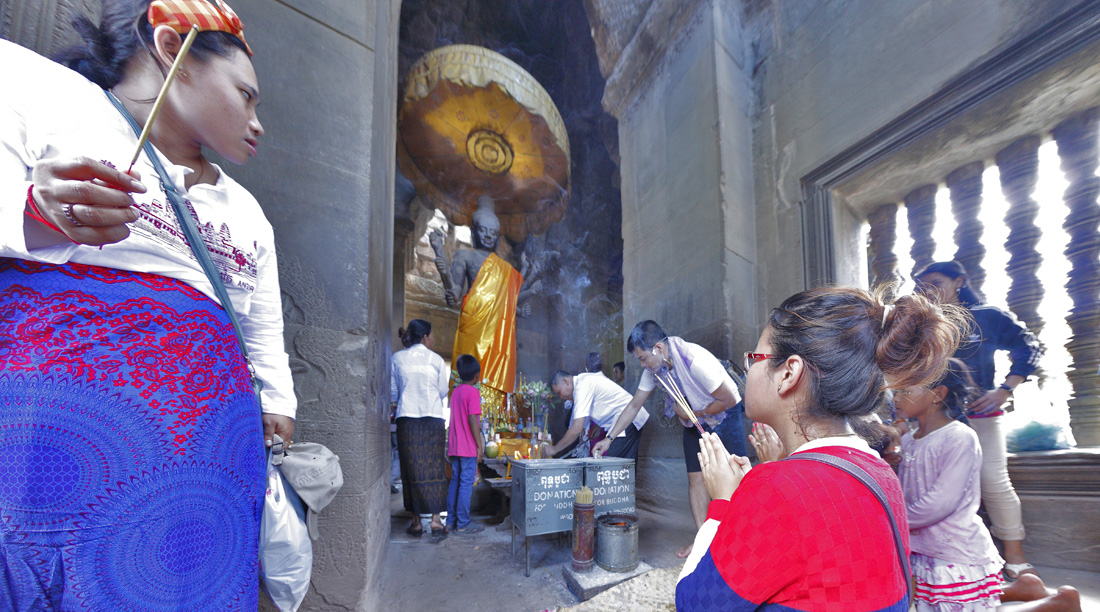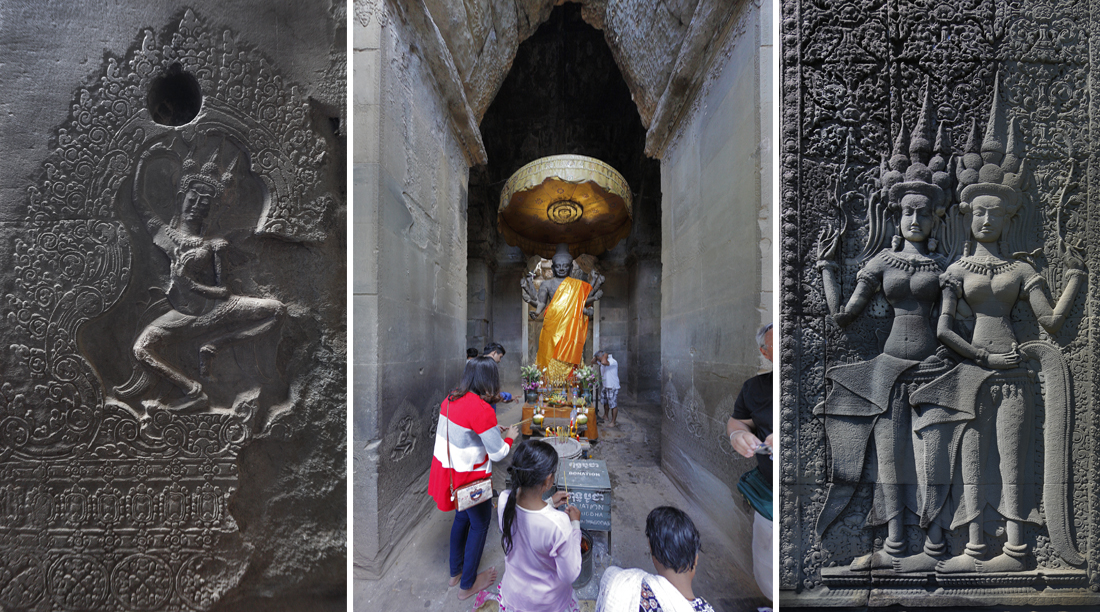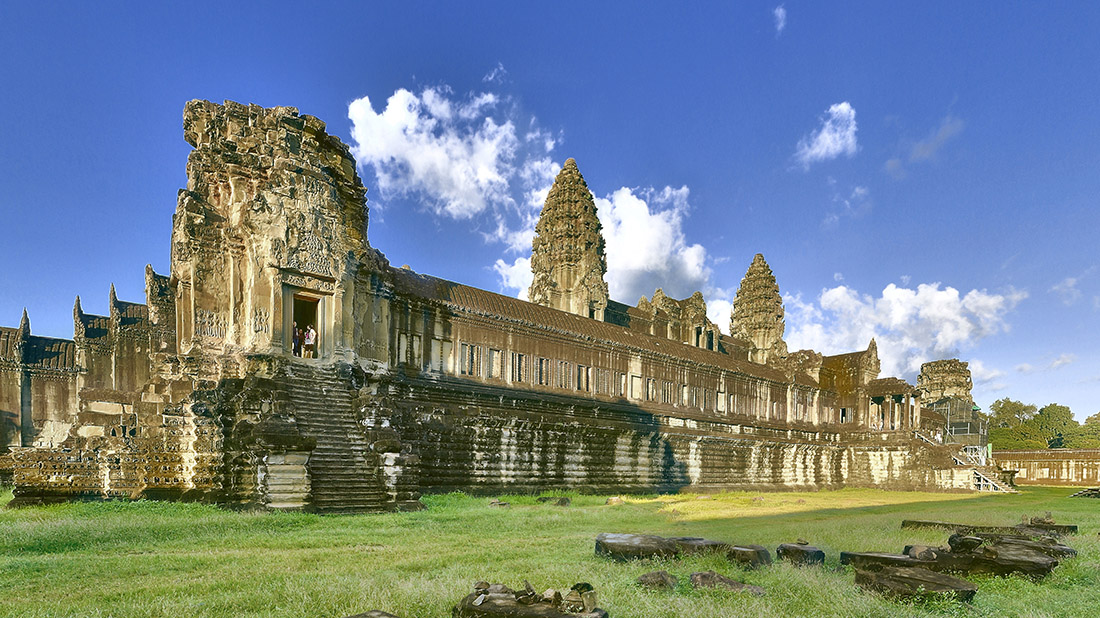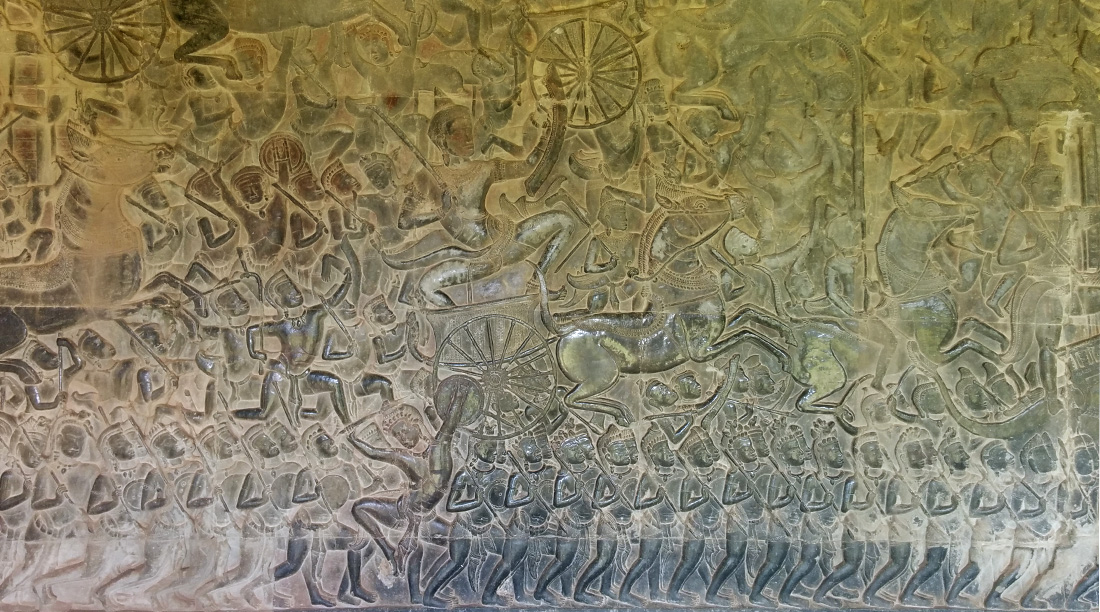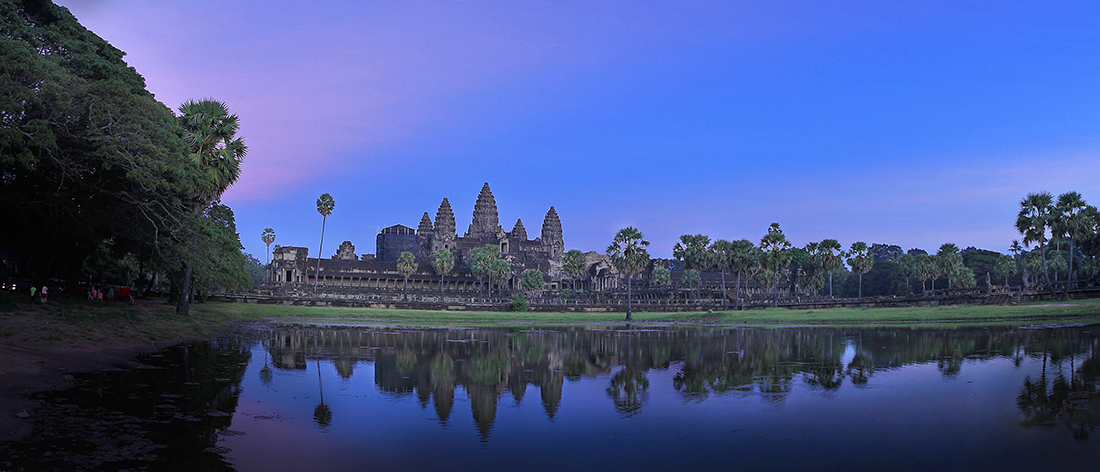This tour has 12 nodes/spots in all. To view each of the spot, please hover the mouse over the thumbnails and click on it in the bottom middle of the tour window. If you wish to view this sopt on the tour map, click on the Map button on the left bottom corner.
Angkor Wat
Angkor Wat (Khmer: “Capital Temple”) is a temple complex in Cambodia and the largest religious monument in the world, on a site measuring 162.6 hectares (402 acres). It was originally constructed as a Hindu temple of Lord Vishnu for the Khmer Empire, gradually transforming into a Buddhist temple towards the end of the 12th century. It was built by the Khmer King Suryavarman II in early 12th century in Yasodharapura (present-day Angkor), the capital of the Khmer Empire, as his state temple and eventual mausoleum. Breaking from the Shaiva tradition of previous kings, Angkor Wat was instead dedicated to Vishnu. As the best-preserved temple at the site, it is the only one to have remained a significant religious center since its foundation. The temple is at the top of the high classical style of Khmer architecture. Over a period it has become a symbol of Cambodia, appearing on its national flag, and it is the country’s prime attraction for visitors with close to 50% of world’s tourism visiting Angkor Wat every year.
The modern name, Angkor Wat, means “Temple City” or “City of Temples” in Khmer; Angkor, meaning “city” or “capital city”, is a vernacular form of the word nokor, which comes from the Sanskrit word nagara (Devanagari). Wat is the Khmer word for “temple grounds”, also derived from Sanskrit,”Watika or Wati” meaning “enclosure”. The original name of the temple in Sanskrit was Vrah Visnuloka – Brah Bisnulok which means the sacred dwelling or the living place of Lord Vishnu in Local variant.
History
Angkor Wat lies 5.5 kilometers north of the modern town of Siem Reap, and a short distance south and slightly east of the previous capital, which was centered at Baphuon. In an area of Cambodia where there is an important group of ancient structures, it is the southernmost of Angkor’s main sites. According to legend, the construction of Angkor Wat was ordered by Indra to act as a palace for his son Precha Ket Mealea. According to the 13th century Chinese traveler Daguan Zhou, it was believed by some that the temple was constructed in a single night by a divine architect.The initial design and construction of the temple took place in the first half of the 12th century, during the reign of Suryavarman II (ruled 1113 – c. 1150). Dedicated to Lord Vishnu, it was built as the king’s state temple and capital city. As neither the foundation slab nor any contemporary inscriptions referring to the temple have been found, its original name is unknown, but it may have been known as “Varah Vishnu-lok” indicative of the presiding deity. Work seems to have ended shortly after the king’s death, leaving some of the bas-relief decoration unfinished. In 1177, approximately 27 years after the death of Suryavarman II, Angkor was sacked by the Chams, the traditional enemies of the Khmer. Thereafter the empire was restored by a new king, Jayavarman VII, who established a new capital and state temple (Angkor Thom and the Bayon respectively) a few kilometres to the north.
Towards the end of the 12th century, Angkor Wat gradually transformed from a Hindu center of worship to Buddhism, which continues to the present day. Angkor Wat is unusual among the Angkor temples in that although it was somewhat neglected after the 16th century it was never completely abandoned, its preservation being due in part to the fact that its moat also provided some protection from encroachment by the jungle.
The temple is a powerful symbol of Cambodia, and is a source of great national pride that has factored into Cambodia’s diplomatic relations with France, the United States and its neighbor Thailand. A depiction of Angkor Wat has been a part of Cambodian national flags since the introduction of the first version circa 1863.

